Released back in February 2018 the Sony a7III and since been superseded by the Sony a7IV.
Thanks to this it can be picked up for an MRRP of: $1,998.00 which is $500 cheaper than the a7IV. However, it also sees price reductions quite often of up to $500.
At the time of posting this article the a7III was priced at $1,498 at B&H Photo, and with the MRRP of the Sony a6700 being $1,398.00 at B&H Photo, you might be wondering how these two stack up against each other.
In this article I’ll be comparing all of the differences that you need to know if you are thinking about purchasing one of these Alpha cameras.
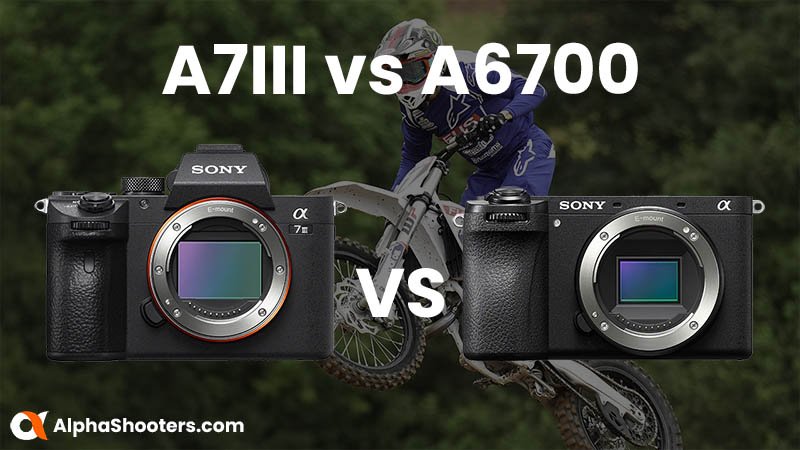
Table of Contents[Hide][Show]
- Summary
- Key Shared Features
- Key Spec Comparison
Key Differences+−
- Sensor and Processor
- ISO Sensitivity
- Still Image Recording Formats
- Video
- Stabilization
- APS-C / Super 35 Mode
- Autofocus
- Shutter
- Drive Speed & Buffer
- Electronic Viewfinder and LCD Display
- Menu and Touch Control
- Camera Body & Controls
- Full-time DMF
- Focus Bracketing
- Memory Cards
- Load / Save Settings (CAMSET)
- Battery Life & USB Charging
- Connectivity
- Live Streaming / Webcam
- Firmware Updates
- What’s in the Box
- Price
- Conclusion
- Reviews
- Sony A7III Guides & Resources
- Sony A6700 Guides & Resources
- Complete Specification Comparison
Summary
The a6700 offers a lot more for video shooters with 4K60p / 4K120p, in-body time-lapse creation and an excellent vari-angle LCD. Superior autofocus performance and subject tracking will also help you to track and capture more difficult subjects. On the other hand, the a7III with its full-frame sensor still provides excellent value for money.
The Sony a7III is over 5 years older than the a6700, so it’s hardly surprising that the a7III is starting to look like a dinosaur when we compare the specs.
However, the a7III is still a very capable camera and it will have no trouble matching and even surpassing the a6700 in image quality, especially when shooting in low light conditions.
Also, if you are a wedding or event photographer and would prefer to backup your images to a second memory card then the a7III is going to be the best choice for you.
Of course, you could also pay a little more for the a7IV. You can read my A7III vs A7IV Comparison if you are interested in finding out how these two cameras compare.
Key Shared Features
Before we dive into the differences, here’s a list of the key features that they do share in common:
- 14-bit RAW image files
- 2.36 million dot EVF
- 5 axis in-body stabilization
- Micro HDMI port
- Microphone and headphone jacks (3.5mm)
- Stereo microphone and speaker
- USB charging
- Dust-and moisture-resistant magnesium-alloy body
- NP-FZ100 battery
Key Spec Comparison
First let’s just take a quick look at how the key specifications stack up.
| Specification | Sony A7III | Sony A6700 |
|---|---|---|
| Sensor: | 24.2MP Back-Illuminated 35mm Full-frame Image Sensor | 26.0 MP APS-C Back-illuminated Exmor R CMOS |
| Processor: | BIONZ X | BIONZ XR |
| Stabilization (IBIS): | 5-axis | 5-axis |
| Electronic Viewfinder (EVF): | 2,359,296 dots | 2 359 296 dots |
| Display (LCD): | 921,600 dots (Up by approx. 107 degrees, Down by approx. 41 degrees) | 1 036 800 dots vari-angle |
| ISO Sensitivity Stills: | ISO 100-51200 (expandable: ISO 50-204800) | ISO 100 – 32000 (expandable to ISO 50 – 102400) |
| ISO Sensitivity Movies: | ISO 100-51200 (expandable: ISO 100-102400) | ISO 100 – 32000 |
| Movie Resolution Max: | 4K / 30p | 4k60p / 4k120p |
| Memory Cards: | Memory Stick PRO Duo, Memory Stick PRO-HG Duo, Memory Stick Micro (M2), SD memory card, SDHC memory card (UHS-I/II compliant), SDXC memory card (UHS-I/II compliant), microSD memory card, microSDHC memory card, microSDXC memory card | UHS-I/II SD cards |
| Memory Card Slots: | SLOT1: Slot for SD (UHS-I/II compliant) memory card, SLOT2: Multi slot for Memory Stick Duo™/SD (UHS-I compliant) memory card | One |
| Shutter Speed Still Images: | 1/8000 to 30 s, Bulb | 1/4000 to 30 sec, Bulb (1/8000 electronic). |
| Max Frames Per Second: | 10 fps | 11 fps |
| Price (MRRP): | $1,998.00 / £1,599.00 | $1,398.00 / £1,449.00 |
| Price Check: | B&H Photo | Amazon | B&H Photo | Amazon |
Key Differences
Now let’s take a much closer look at the key differences between these two cameras.
Sensor and Processor
Probably the biggest difference between these two cameras is that the a7III has a full-frame sensor whereas the a6700 has an APS-C sized sensor.
The main difference between full-frame and APS-C is the physical size of the image sensor. Full-frame sensors are larger than APS-C sensors and therefore other differences between the two types of sensor flow from that. But bigger isn’t always better and each format has its own key advantages.
The a7III features a 24.2 megapixel full-frame 35mm back-illuminated Exmor R CMOS sensor. The back-illuminated structure enhances light collection efficiency, expands circuitry scale, and, with the help of a copper wiring layer that contributes to quicker data transfer, outputs data at very high speed, while minimising noise to reveal fine details in every picture.

Supporting the a7III’s sensor is the BIONZ X™ image processing engine and front-end LSI. This combination achieves data readout speed that is two times faster and data processing capability that is 1.8 times higher than its predecessor the a7II.
The Sony a6700 features a much newer 26.0 MP APS-C Back-illuminated Exmor R CMOS sensor which can also be found in the Sony FX30 cinema camera.

The a6700 also has a much newer BIONZ XR™ processor that delivers up to eight times more processing power than the BIONZ X found in the a7III.
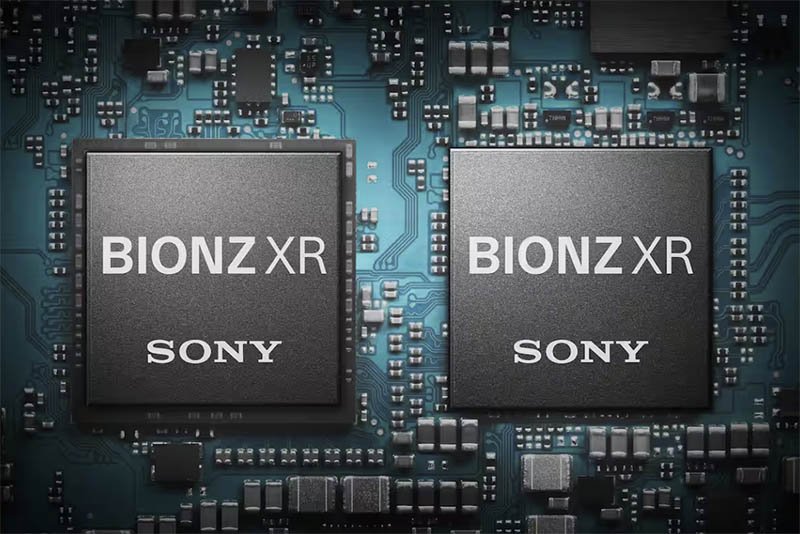
ISO Sensitivity
The a7III with its much larger full-frame sensor has the clear advantage when shooting in low light.
| Sony A7III | Sony A6700 | |
|---|---|---|
| Normal ISO (Stills): | ISO 100-51200 | ISO 100 – 32000 |
| Expanded ISO (Stills): | ISO 50-204800 | ISO 50 – 102400 |
| Normal ISO (Movies): | ISO 100-51200 | ISO 100 – 32000 |
| Expanded ISO (Movies): | ISO 100-102400 | ISO 100 – 32000 |
Still Image Recording Formats
The a7III offers compressed and uncompressed RAW 14-bit files along with JPEGs. However, this is limited to 12 bits during compressed RAW continuous shooting, BULB exposure, or when Long Exposure NR is ON.
The Sony a6700 does not support uncompressed RAW but does supports JPEG and Compressed RAW. It also adds support for Lossless Compressed RAW and HEIF (High Efficiency Image File) format.
The a6700 also has a light image quality selection that generates less data for JPEG and HEIF images.
The a6700 also supports 14-bit RAW files when shooting with long exposure noise reduction and bulb mode, whereas the a7III drops down to 12-bit when shooting in these modes.
Video
The a7III was the first A7 Series camera to support 4K video capture with oversampled 24p capture from the full width of its sensor, although a 1.2x crop is applied for 30p shooting. Video footage is captured in 8-bit 4:2:0 internal up to 100Mbps, and 4:2:2 external.
The a6700 trumps the a7III here because it can capture 4K (QFHD: 3840 x 2160) at up to 60p (50p) with only a small 1.04x crop. The camera also supports high-quality XAVC S-I (All-Intra) and XAVC HS formats with 10-bit 4:2:2 color sampling.
The a6700 also supports high frame rate recording at up to 120p for 4K QFHD (3840 x 2160) but this is with a 38% crop. S&Q mode also enables recording of slow or quick motion sequences in camera with up to 240 FPS supported in Full HD.
As well as Sony’s S-Cinetone picture profile as a preset, the a6700 includes many more video specific features that you won’t find on the a7III, let’s take a closer look at these now.
Stills / Movies / S&Q Dial
The a6700 features dedicated dial on the camera allows you to have 3 dedicated memories for still, movies and S&Q.
Focus Map
Focus Map lets you easily visualize depth of field when you’re shooting video. When in use, a focus (depth map) is overlaid on a display of the live view in real time, so you can easily see which areas are in or out of focus.
AF Assist
While shooting a movie with auto focus, you can change the subject in focus by operating the focus ring of the lens.
Real-time Tracking for Movies
AI-based Real-time Tracking provides a dramatic improvement in Real-time Tracking performance, automatically recognising, tracking, and focusing on the eyes of a specified subject. Tracking can also be initiated by touch.
Active Mode Enhanced Movie Image Stabilization
Active Mode provides additional image stabilization for handheld movie shooting. The a6700 has the ability to accurately measure camera shake which is then precisely compensated for optically. However, using this feature will result in a 1.13x crop.
Breathing Compensation
Breathing Compensation basically crops and resizes the video to cancel-out any change in a lens’s angle-of-view (AoV) as it focuses. In other words, there’s no distracting change of framing as you refocus.
However, this mode only works with select Sony lenses because the camera needs a profile of the breathing characteristics. You can find the full list of lenses that support this function on Sony’s website here.
Here’s a video from Sony to demonstrate Breathing Compensation on the a7IV.
Import User LUT files
See how your footage will look in post-processing while you’re shooting. The α6700 allows you to import a custom LUT (Look Up Table) that can be applied to the camera’s monitor image while recording, providing a preview.
Auto Framing
The Auto Framing function automatically crops and re-frames the image while using AI to track your subject.
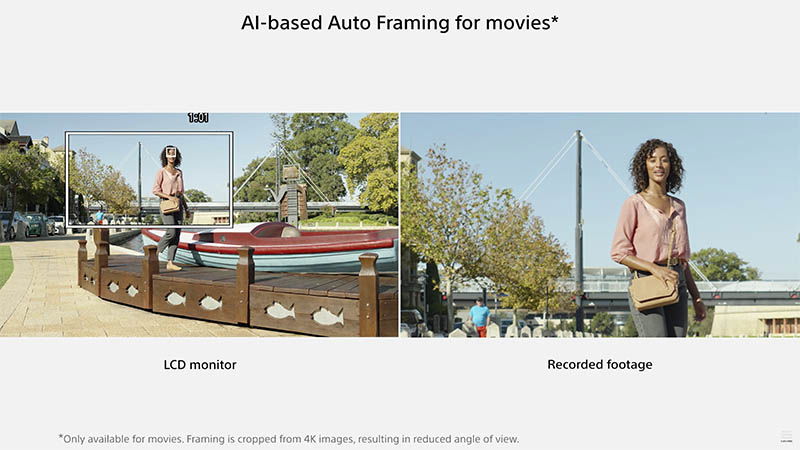
In-camera Time-Lapse / Interval Shooting
The in-camera time-lapse function allows you to create time-lapse videos within the camera itself. Although the a7III includes an interval timer, it does not compose the time-lapse for you in-camera, this needs to be done in post.
Stabilization
Both the Sony a7III and the a6700 feature 5 axis in-body image stabilization (IBIS). This appears to be a little more effective on the a7III which provides a 5.5 step shutter speed advantage over the 5 steps of the a6700.
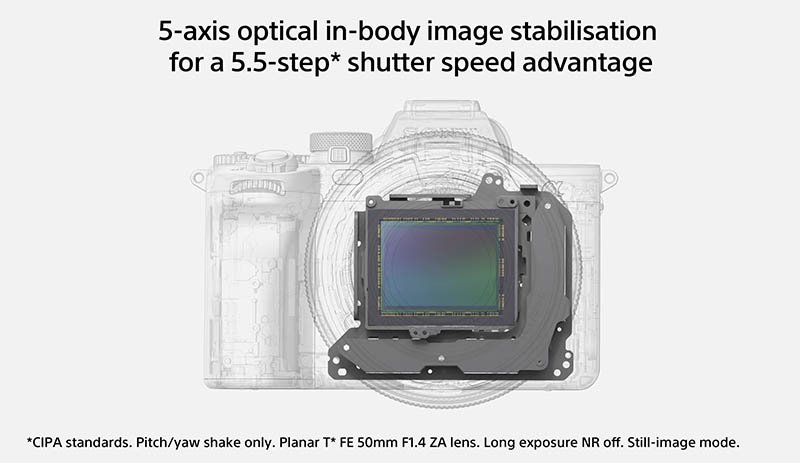
One feature that you won’t find on the a7III but you will on the a6700 is Active Mode Enhanced Movie Image Stabilization.
This applies a 1.13x crop to the footage and allows the camera to move the crop around, within the standard video regions, to correct for more dramatic motion than the sensor shift alone can provide.
The camera’s gyro data is saved into the video file so that you can apply more powerful digital correction (or less correction, less crop), in Sony’s Catalyst software.
APS-C / Super 35 Mode
The a7III features an APS-C / Super 35 Mode that allows you to shoot full-frame lenses with a crop factor of 1.5x, or attach an APS-C lens. If you attach an APS-C lens without using APS-C mode you will notice black bars on either side of your image, this is because an APS-C lens will not completely cover the full-frame 35mm sensor.
The maximum image size will however be reduced to 10 megapixels (3936 × 2624).
Needless to say, you won’t find an APS-C / Super 35 Mode on the a6700 because it’s an APS-C camera and this is the default shooting mode.
Autofocus
The autofocus system in the a7III was fantastic when first released, but it has unfortunately missed out on recent updates like real-time tracking, bird eye AF and eye tracking in movies.
The a6700 is equipped with an AI processing unit that greatly increases its AF performance compared to the a7III. This includes much more accurate subject recognition and a wider range of subjects.
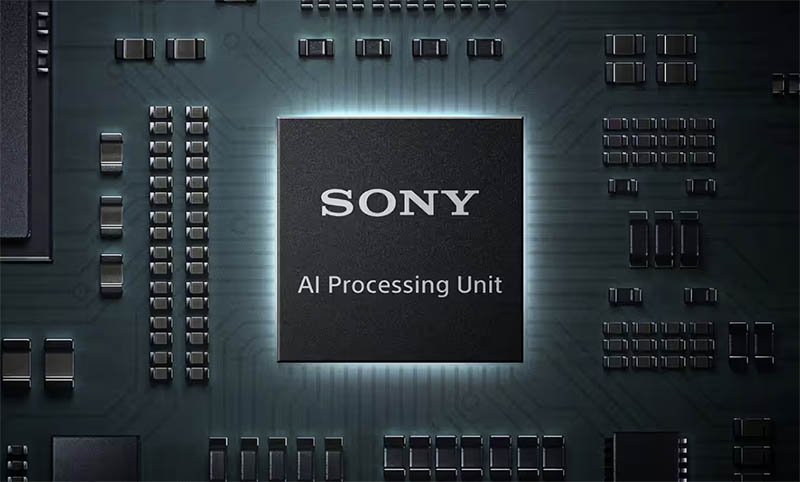
In addition to humans and animals that the a7III is capable of tracking, the a6700 can recognize birds, insects, cars, trains and airplanes.
Phase & Contrast Detection Points
The a7III features 693 phase detection points in full-frame mode covering 93% of the image area. In APS-C mode with a full frame lens you get 299 phase detection points and with an APS-C lens this drops to 221 points. There are also 425 contrast detection points.
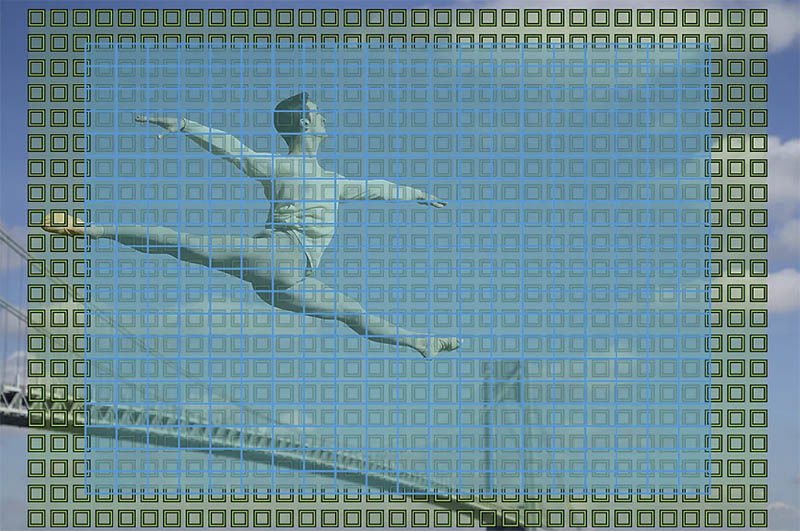
The a6700 improves on this slightly with up to 759 phase detection points, covering approximately 93% of the image area when shooting stills. For shooting movies this reduces to a maximum of 495 points.

Lowlight AF Performance
When it comes to auto focusing in low light both cameras are able to achieve the same levels of performance. One would of thought the a7III with its full-frame sensor would have the advantage here, but it appears that the newer sensor and processor in the a6700 are able to compensate for the smaller sensor.
- A7III: EV-3 to EV 20 (ISO 100 equivalent with F2.0 lens attached)
- A6700: EV-3 to EV 20 (ISO 100 equivalent with F2.0 lens attached)
Shutter
Both the A7III and a6700 feature a Mechanical / Electronic shutter.
However, the a7III has a maximum shutter speed of 1/8000s when shooting stills with its mechanical and electronic shutters.
The a6700 can also shoot up to 1/8000 sec when utilizing the electronic shutter, but this is limited to 1/4000 sec when using the mechanical shutter.
The a6700 also supports Variable Shutter, this allows users to manually adjust the shutter speed and observe the effects of flickering on the camera’s monitor. This feature is available for both still photography and movies, it’s not available with the a7III.
Both cameras support anti-flicker shooting which can time the shooting of images to moments when flickering will have less of an impact by detecting the flickering frequency automatically. However, the a7III only supports anti-flicker for stills, the a6700 supports it for both stills and movies.
Drive Speed & Buffer
The Sony a7III supports a maximum continuous drive speed of 10 frames per second in Hi+ drive mode with both the mechanical and the electronic shutter. But this speed is only achievable when shooting compressed RAW or JPEG.
The a6700 supports a maximum frame rate of 11 fps when shooting in Hi+ drive mode. There is no reduction in the frame rate here because the a6700 does not support shooting in uncompressed RAW.
So with only a one frame difference between these two cameras it’s unlikely that this will be the deciding factor for you on which to purchase!
Buffer
In my Sony A7III Memory Card Tests I discovered that the a7III can shoot around 166 Extra Fine JPEGS, 106 Compressed RAW or 58 Uncompressed RAW files when using a SanDisk Extreme Pro UHS-II memory card in slot one before hitting the buffer.
Until I’m able to test the a6700 we can only go on Sony’s quoted figures which you will find in the table below.
| JPEG Extra Fine L | Uncompressed RAW | Compressed RAW | Lossless Compressed RAW | HEIF | |
|---|---|---|---|---|---|
| A7III | 166 shots | 58 | 106 | – | |
| A6700 | 143 shots | – | 59 Shots | 23 Shots |
It appears that the a7III has the larger buffer here and can shoot almost double the number of compressed RAW images before hitting the buffer.
Electronic Viewfinder and LCD Display
Now let’s compare how the electronic viewfinders and LCD displays between these two cameras stack up.
Electronic Viewfinder (EVF)
Both cameras feature a 2.36 million dot OLED viewfinder but they are not identical.
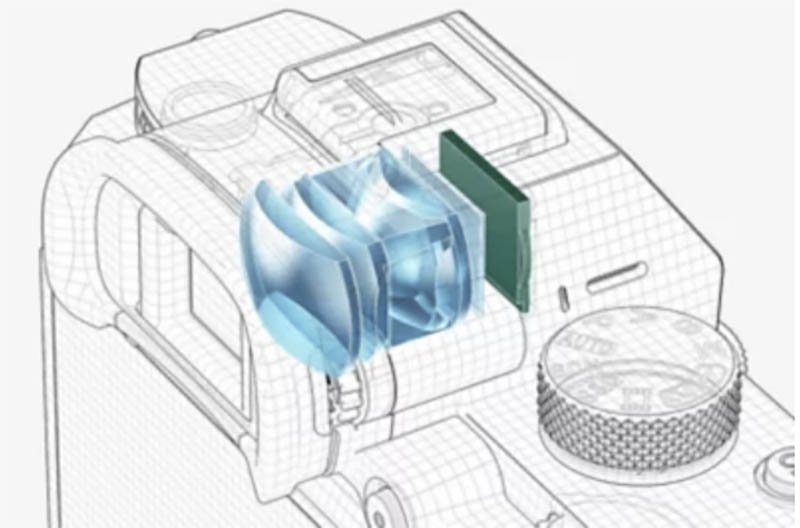
If you look at the comparison table below you’ll see that the a6700 has a slightly smaller viewfinder but a larger magnification. It also features a higher 120 fps mode for an even smoother viewing experience.
| Sony A7III | Sony a6700 | |
|---|---|---|
| EVF Type | 1.3 cm (0.5 type) electronic viewfinder (color), XGA OLED | 1.0 cm (0.39 type) electronic viewfinder (XGA OLED) |
| Number of Dots | 2,359,296 dots | 2,359,296 dots |
| Field Coverage | 100 % | 100 % |
| EVF Magnification | Approx. 0.78 x (with 50mm lens at infinity, -3.28 feet-1) | Approx. 1.07x (35 mm camera equivalent: Approx. 0.70x) with 50 mm lens at infinity, -1 m-1 |
| EVF Eyepoint | Approx. 23 mm from the eyepiece lens, 18.5 mm from the eyepiece frame at -1m-1 (CIPA standard) | Approx. 22 mm from the eyepiece lens, 19.4 mm from the eyepiece frame at -1 m-1 (CIPA standard) |
| Finder Frame Rate Selection | 60fps | NTSC mode: STD 60fps / HI 120fps, PAL mode: STD 50fps / HI 100fps |
LCD Display
Both LCD displays are the same size physically. The a7III LCD is comprised of 921,600k dots versus 1 036 800 dots for the a6700’s display, a small but welcome improvement.
The display on the a7III is limited to tilting up by approx. 107 degrees and down by approx. 41 degrees, which definitely rules this camera out for Vlogging because the LCD can not be flipped out to show yourself in the frame.
The Sony a6700 features an improved LCD design over the a7III and the LCD can be flipped out to the side and rotated approx. 270 °. Helping you to comfortably shoot from a variety of positions.
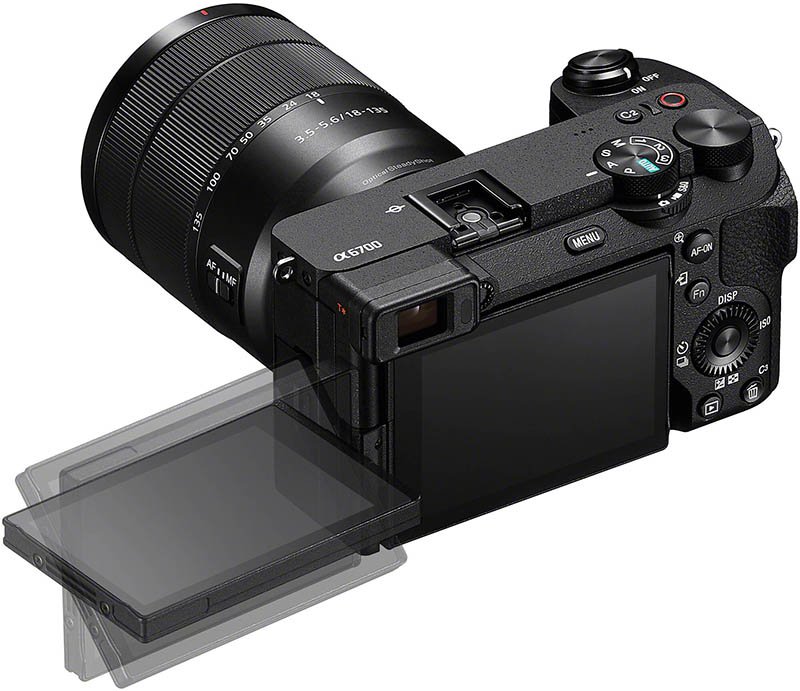
Menu and Touch Control
The a7III features an older and less intuitive menu design which is often complained about although personally I’ve never found it very difficult to navigate.

The a6700 features the latest menu updates and touch functionality that have been incorporated into cameras like the a7IV and a7RV. These advancements in user interface and touch controls help to ensure a more intuitive and user-friendly experience.

The new menu of the a6700 allows you to easily activate key functions, such as selecting a focus point or subject to track, or triggering the shutter.
Swiping in from the left or right edge of the shooting display reveals touch icons that allow quick changes to the shooting mode and other settings.
The function (Fn) menu can also now be displayed by simply swiping up.
Camera Body & Controls
The a7III is a full-frame camera and this shows in the size and weight of the body compared to the smaller APS-C format a6700.
The dimensions and weights are as follows:
- A7III: W/H/D 126.9 x 95.6 x 73.7mm (approx. 650 g / 1 lb 7.0 oz)
- A6700: W/H/D: 122.0 x 69.0 x 75.1 mm, (approx. 493 g / 1 lb 1.4 oz)
Sony A7III
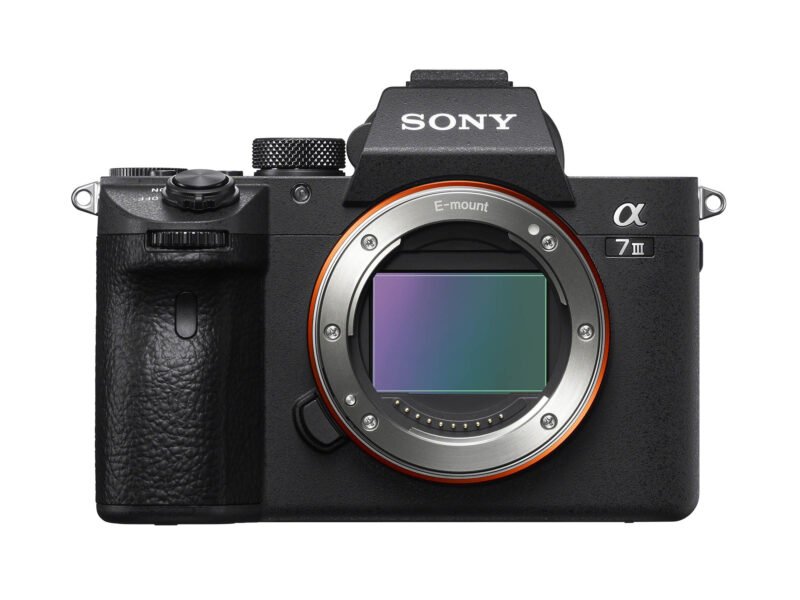
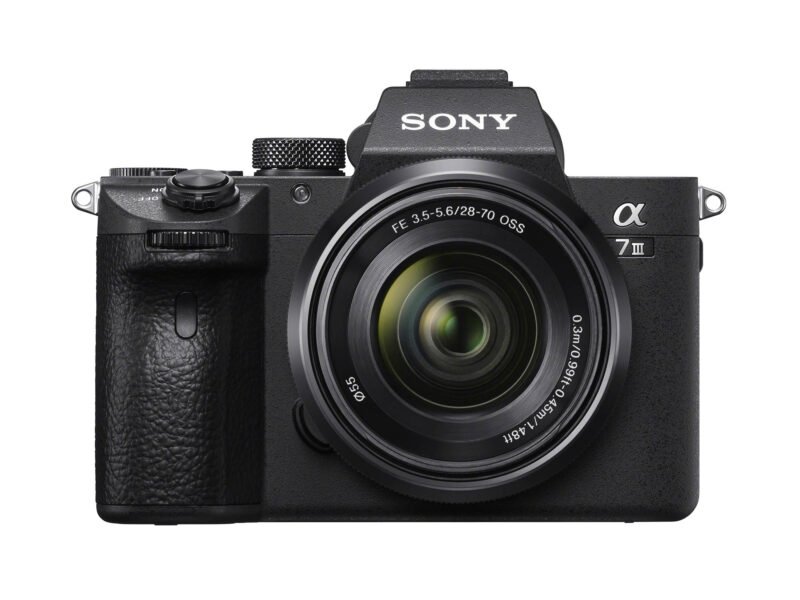
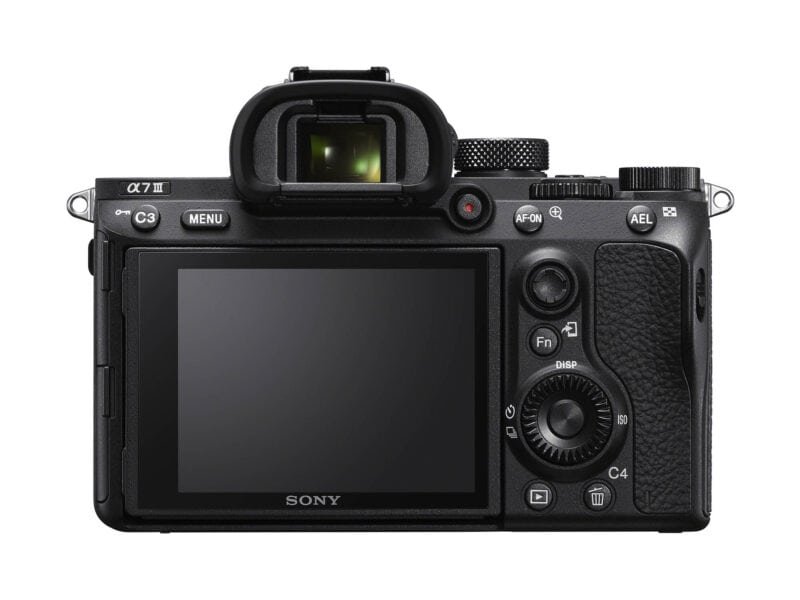

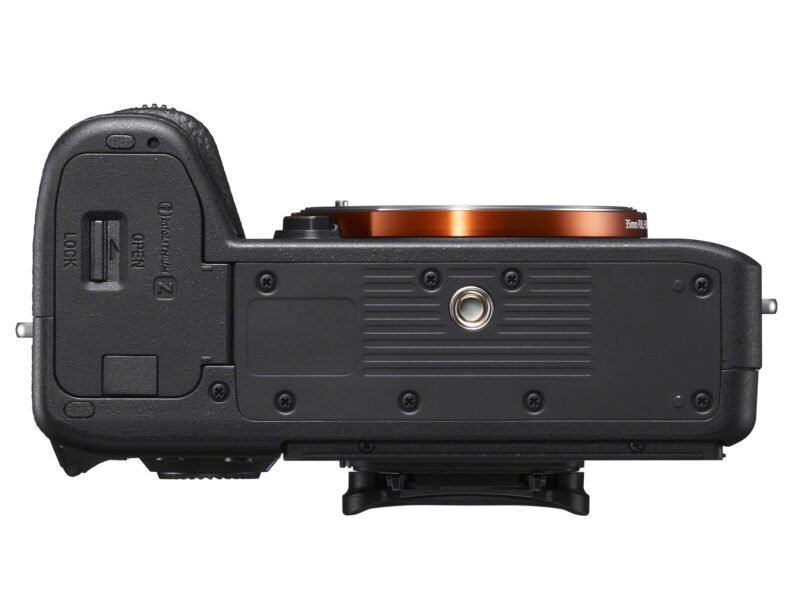
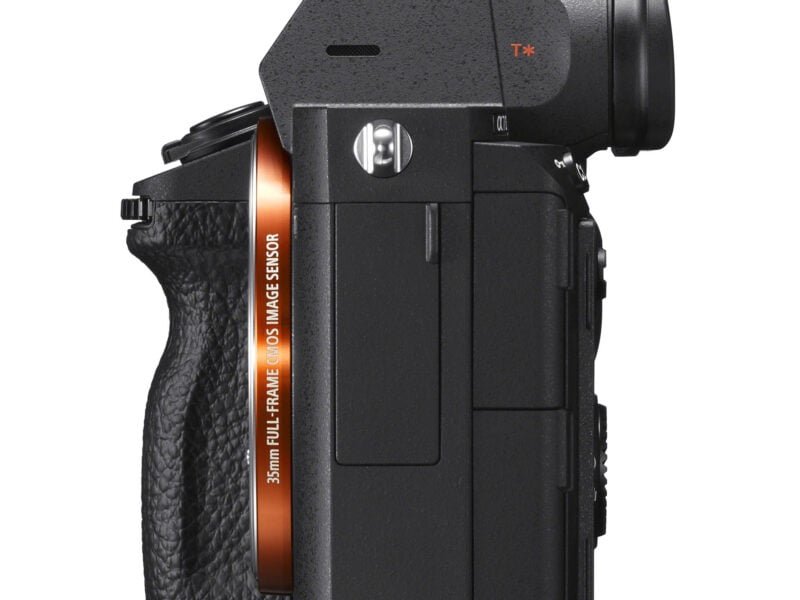
Sony A6700
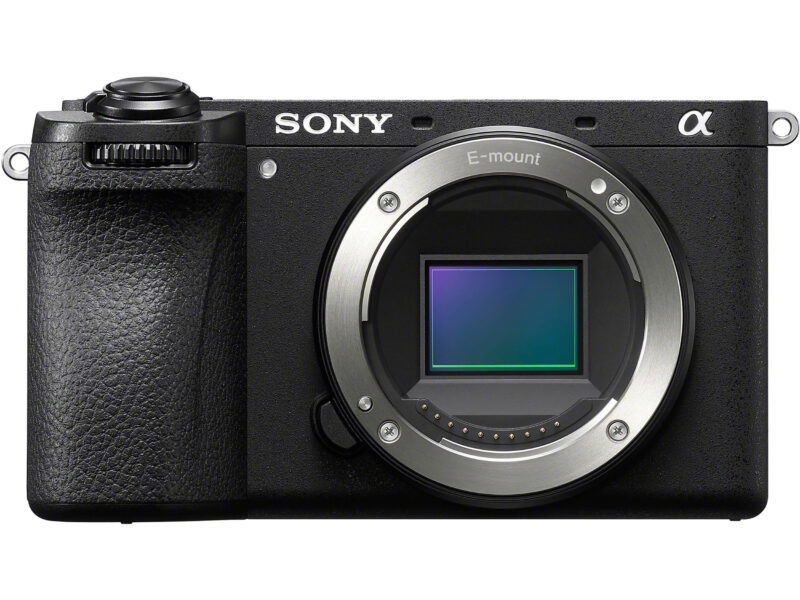
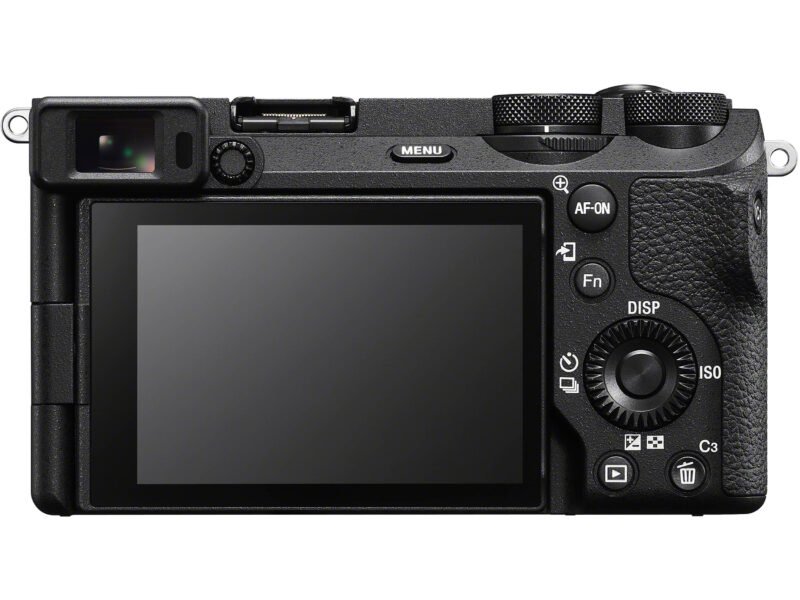
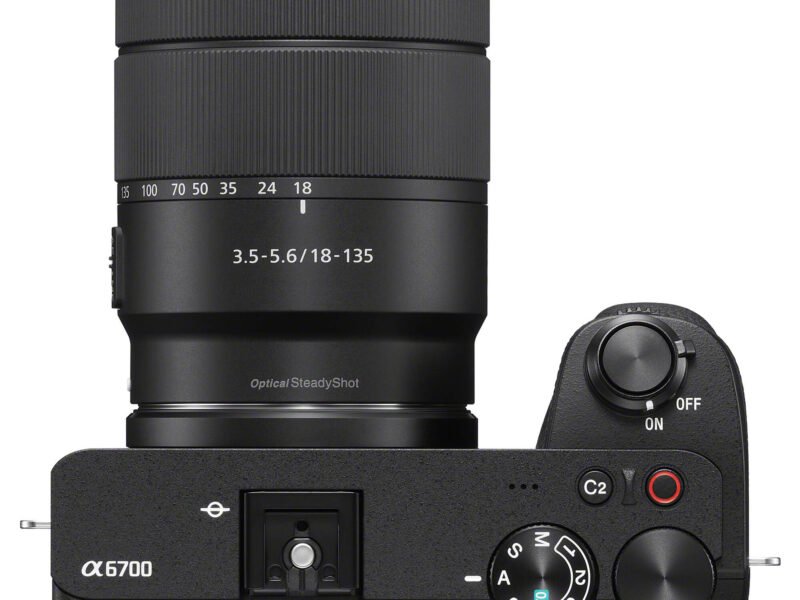

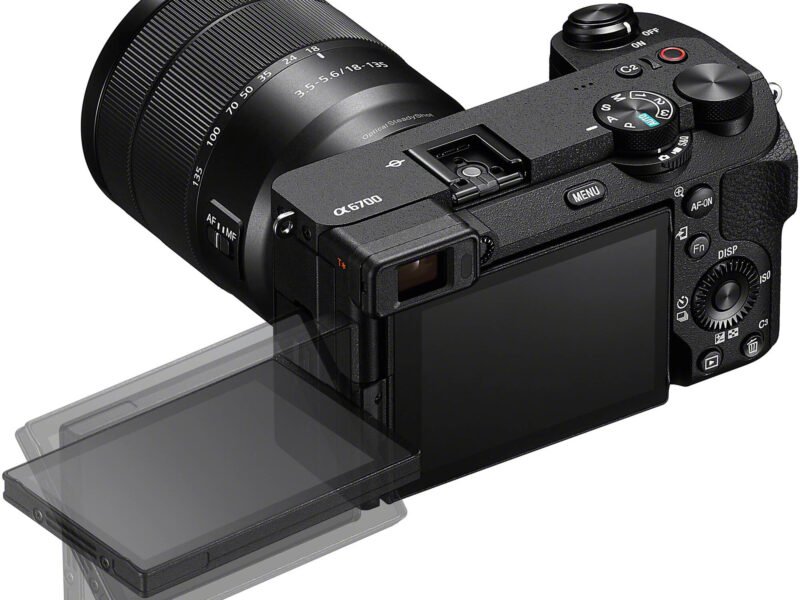
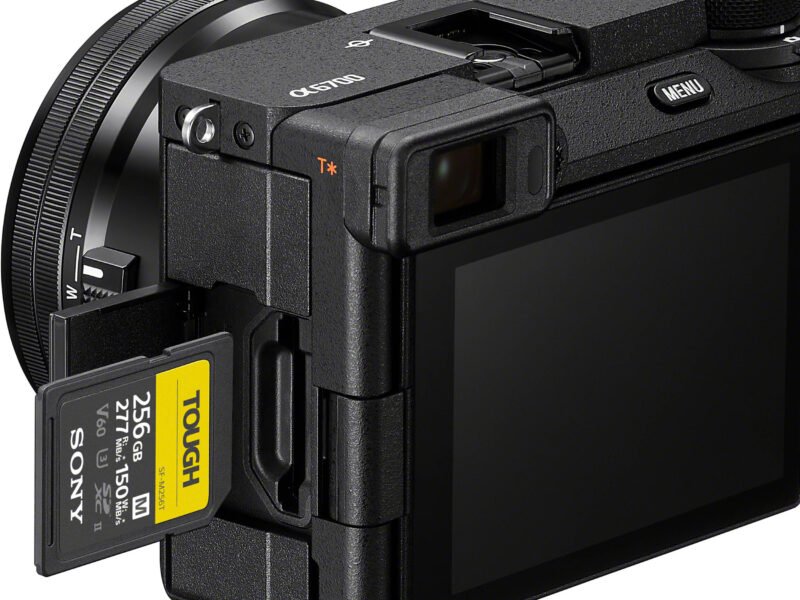
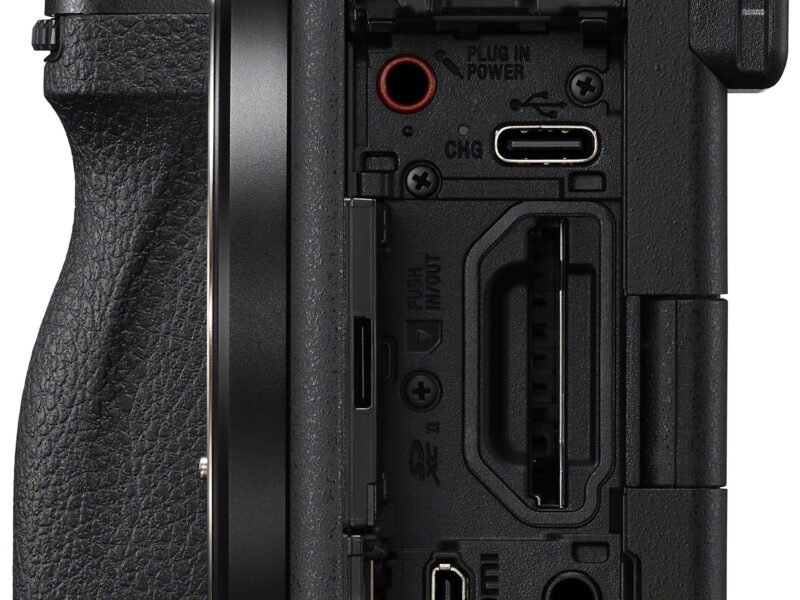


The larger body of the a7III makes it a lot more comfortable to hold than the a6700, especially if you have larger hands. The larger body also means there is more space for buttons and dials.
Both the a7III and a6700 have a front control wheel. On the top of the a7III you’ll find the on/off switch, shutter button, control dial, C1 & C2 custom button and an exposure compensation dial.
On the top of the a6700 you will find the on/off switch, shutter button, a dedicated movie record button, mode dial and C2 (custom) button.
There’s an extra dial on the a6700 that allows you to have 3 dedicated memories for stills, movies and S&Q. This very useful feature is not available on the a7III. There’s also a C1 button located on the right side of the a6700.
The rear of each camera is similar but you’ll also find a joystick control for moving the focus point on the a7III which is absent from the a6700.
Full-time DMF
Full-time DMF is only available on the a6700. This works when shooting stills with AF-C or AF-S autofocus. With DMF you can rotate the lens’s focus ring to switch to manual focus mode at any time, making switching focus on the fly super easy and fast. The a7III does not support full-time DMF unless you have a lens that supports this feature.
Focus Bracketing
Focus bracketing is another new feature that you’ll find on the a6700 but not the a7III.
With focus bracketing the a6700 can automatically shoot up to 299 images with sequentially shifted focus points according to intervals and a sequence specified by you. Unfortunately there is no option to automatically combine images in-camera, this needs to be done in post.
This video from Mark Galer explains more about how focus bracketing works with the a7RV, but it’s similar for the a6700.
Memory Cards
The Sony a7III has two memory card slots that allow you to roll-over to a second card when the first is full, or shoot to both cards simultaneously for backup purposes on important shoots.

The a7III supports the faster UHS-II SD cards in slot 1 but only the slower UHS-I cards in slot 2. Because of this setup if you did wish to shoot to both cards simultaneously you would always be limited to the speed of the slower UHS-I card in slot 2.
The a6700 has only a single memory card that supports UHS-II / UHS-I SD cards. The memory card slot is also located on the side of the camera.
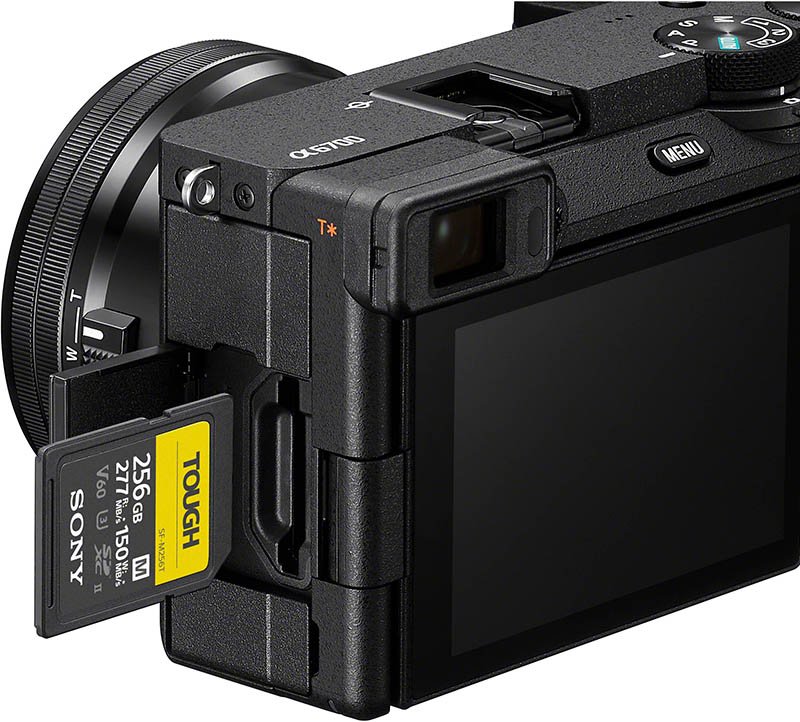
Load / Save Settings (CAMSET)
The a6700 introduces a new capability where you can save and load camera settings directly to and from a memory card. Additionally, it allows you to load settings from another camera of the same model.
The a7III offers a more basic option that allows you to save up to 4 (M1 through M4) to a memory card, then recall the settings using the mode dial.
Battery Life & USB Charging
Both cameras support the Sony NP-FZ100 battery and in-camera charging via USB. However the battery life for shooting stills and movies does vary a little.

With the a7III you can shoot approx. 610 shots (Viewfinder) or approx. 710 shots (LCD monitor) (CIPA standard) with a full battery. The a6700 can achieve approx. 550 shots (Viewfinder) and approx. 570 shots (LCD monitor) (CIPA standard).
For actual movie recording the a7III will record for approx. 115 min (Viewfinder) or approx. 125 min (LCD monitor) (CIPA standard). The a6700 will get you approx. 95 min actual (Viewfinder) or approx. 100 min (LCD monitor) (CIPA standard).
The more advanced processors in the a6700 do appear to be a little more power thirsty than the older processor in the a7III.
The a6700 also features USB PD (Power Delivery), enabling rapid battery charging directly within the camera. This feature delivers 3 to 4 times more power than the a7III, significantly reducing charging times.
Connectivity
The a7III supports 2.4 Ghz wireless connections and bluetooth. There’s a Multi/Micro USB Terminal and a Hi-Speed USB-C 3.1 Gen 1 (5Gbps) terminal and micro HDMI micro connector. There’s also a 3.5 mm Stereo minijack for a microphone and headphone jack.
The a6700 supports 2.4 Ghz / 5 Ghz wireless connections and bluetooth. There’s a Hi-Speed USB-C 3.2 Gen 1×1 (5Gbps) terminal and micro HDMI micro connector. There’s also a 3.5 mm Stereo minijack for a microphone and headphone jack.
The a7III can be controlled remotely using the Imaging Edge Mobile App but functionality is limited. The Sony RMT-P1BT Bluetooth Remote (B&H Photo | Amazon) is also supported.
The a6700 supports Sony’s newer Creators App for remote control and file management.
The Sony RMT-P1BT Bluetooth Remote (B&H Photo | Amazon) is also supported by both cameras.
The a7III features the old hot shoe whereas the a6700 gets the newer Multi Interface (MI) Shoe that enables cable-less connection, directly transferring the digital audio signal for high-quality sound without degradation, while also supplying power and eliminating concerns about mic batteries is present on both cameras.
Live Streaming / Webcam
The Sony a7III can be used as a webcam when using Sony’s Imaging Edge Webcam software but the resolution is limited to 1,024 × 576 pixels.
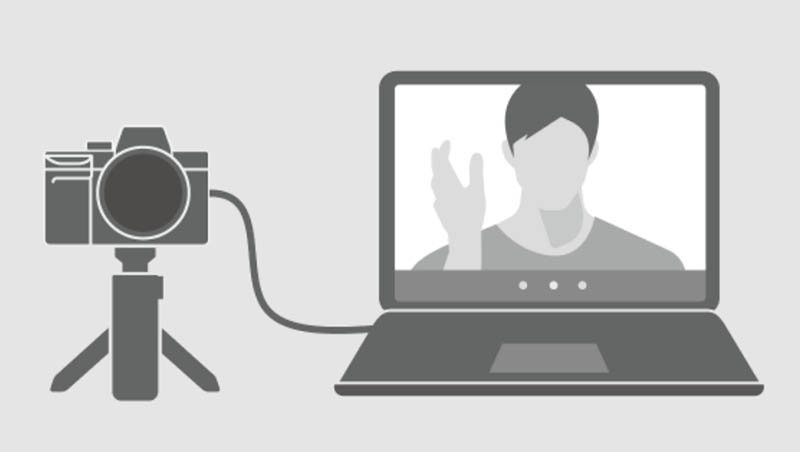
With the a6700 you just need to connect the camera to a computer or smartphone via USB, then select “Live Stream (USB Streaming)”.
The a6700 can also function as a 4K (2160p) webcam with advanced AF that makes online meetings and live streaming events even smoother.
Firmware Updates
For Sony a7III firmware updates you have to connect the camera to your computer via USB. For Mac OS users this is a nightmare as it triggers security flags and can be very difficult to install.
Fortunately the a6700 allows for firmware updates via memory card which is a lot easier and less stressful.
What’s in the Box
The box contents of each camera are very similar.
| Sony A7III | Sony A6700 |
|---|---|
| Sony a7III camera body | Sony A6700 Body |
| Rechargeable Battery NP-FZ100 | Rechargeable Battery NP-FZ100 |
| AC Adapter AC-UUD12, | Shoulder strap |
| Shoulder strap, | Body cap |
| Body cap, | Accessory shoe cap |
| Accessory shoe cap, | Eyepiece cup |
| Eyepiece cup, | |
| Micro USB cable |
Price
The MRRP of the a7III makes it the more expensive camera by around $600, then there is the extra cost of full-frame lenses vs APS-C lenses.
However, the a7III is often on sale for $500 less than this, so please don’t pay the full price if you are interested in buying this camera!
Visit our Sony Alpha Deals page to keep an eye on the latest deals available.
The A7III has an MRRP of: $1,998.00 / £1,599.00
The A6700 has an MRRP of: $1,398.00 / £1,449.00
Conclusion
The a6700 offers a lot more for video shooters with 4K60p / 4K120p, in-body time-lapse creation and an excellent vari-angle LCD. Superior autofocus performance and subject tracking will also help you to track and capture more difficult subjects. On the other hand, the a7III with its full-frame sensor still provides excellent value for money.
The Sony a7III is over 5 years older than the a6700, so it’s hardly surprising that the a7III is starting to look like a dinosaur when we compare the specs.
Here are the key features from the A6700 that you won’t find on the A7III:
- BIONZ XR processor
- 4k60p / 4k120p
- S&Q 240 FPS in FHD
- Active Mode enhanced movie image stabilization
- 3 Memory Recalls + CAMSET
- Lossless RAW & HEIF file formats
- 14-bit RAW when shooting long exposure noise reduction and bulb
- Variable shutter
- Import User LUT files
- 759 PDAF points
- Real-time tracking of birds, insects, cars/trains, and airplanes
- In-camera time-lapse creation
- Auto framing
- Focus breathing
- Focus bracketing
- Focus map (movies)
- AF Assist
- Full-time DMF
- Touch shutter
- Firmware updates via memory card
I think you’ll agree that’s quite an extensive list!
However, the a7III is still a very capable camera and it will have no trouble matching and even surpassing the a6700 in image quality, especially when shooting in low light conditions.
Also, if you are a wedding or event photographer and would prefer to backup your images to a second memory card then the a7III is going to be the best choice for you.
Of course, you could also pay a little more for the a7IV. You can read my A7III vs A7IV Comparison if you are interested in finding out how these two cameras compare.
Please let me know in the comments below if you found this comparison helpful or if you have any questions.
Finally, please don’t forget to take a look at our friendly Alpha Shooters community forum before you leave. Thank you! 🙂
Reviews
To learn more about these two cameras I’d recommend watching the following reviews from Gordon Laing.
Sony A7III Guides & Resources
Sony A7III Forum & Facebook Group
If you are looking for further help and advice on the A7III or would simply like to share your photos, then please head over to our friendly full-frame Forum. If you prefer Facebook then I also run the Sony A7III Shooters Group.
Sony A6700 Guides & Resources
Sony A6700 Forum & Facebook Group
If you are looking for further help and advice on the A6700 or would simply like to share your photos and videos, then please head over to our friendly APS-C Forum. If you prefer Facebook then I also run the Sony A6700 + A6600 Shooters Group.
Complete Specification Comparison
I don’t like to leave stones unturned so here’s the complete specification comparison between the two cameras.
Body
| Sony A7III | Sony A6700 | |
|---|---|---|
| Body Type | Mirrorless | Mirrorless |
| Body Material | Magnesium alloy | Magnesium alloy |
| Lens Mount | Sony E-mount | Sony E-mount |
| Lens Compatibility | Sony E-mount lenses | Sony E-mount lenses |
Image Sensor
| Sony A7III | Sony A6700 | |
|---|---|---|
| Aspect Ratio | 3:2 | 3:2 |
| Number of Pixels (Effective) | Approx. 24.2 megapixels | Still images: Approx. 26.0 megapixels max.,Movies: Approx. 19.9 megapixels max. |
| Number of Pixels (Total) | Approx. 25.3 megapixels | Approx. 27.0 megapixels |
| Sensor Type | 35mm full frame (35.6×23.8mm), Exmor R CMOS sensor | APS-C type (23.3 x 15.5 mm), Exmor R CMOS sensor, Back-illuminated |
| Anti-Dust System | Charge protection coating on optical filter and image sensor shift mechanism | Yes |
Still Images
| Sony A7III | Sony A6700 | |
|---|---|---|
| Recording Format | JPEG (DCF Ver. 2.0, Exif Ver.2.31, MPF Baseline compliant), RAW (Sony ARW 2.3 format) | JPEG (DCF Ver. 2.0, Exif Ver. 2.32, MPF Baseline compliant), HEIF (MPEG-A MIAF compliant), RAW (Sony ARW 4.0 format compliant) |
| Image Size (Pixels) (3:2) | 35 mm full frame L: 6000 x 4000 (24M), M: 3936 x 2624 (10M), S: 3008 x 2000 (6.0M), APS-C L: 3936 x 2624 (10M), M: 3008 x 2000 (6.0M), S: 1968 x 1312 (2.6M) | APS-C L: 6192 x 4128 (26 M), M: 4384 x 2920 (13 M), S: 3104 x 2064 (6.4 M) |
| Image Size (Pixels) (16:9) | 35 mm full frame L: 6000 x 3376 (20 M), M: 3936 x 2216 (8.7M), S: 3008 x 1688 (5.1M), APS-C L: 3936 x 2216 (8.7M), M: 3008 x 1688 (5.1M), S: 1968 x 1112 (2.2M) | |
| Image Quality Modes | RAW, RAW & JPEG (Extra fine, Fine, Standard), JPEG (Extra fine, Fine, Standard) | RAW, JPEG, HEIF (4:2:0 / 4:2:2), RAW & JPEG, RAW & HEIF |
| Picture Effect | 8 types: Posterization (Color), Posterization (B/W), Pop Color, Retro Photo, Partial Color (R/G/B/Y), High Contrast Monochrome, Toy Camera (Normal/Cool/Warm/Green/Magenta), Soft High-key , Rich-tone Monochrome | |
| Creative Style | Standard, Vivid, Neutral, Clear, Deep, Light, Portrait, Landscape, Sunset, Night Scene, Autumn leaves, Black & White, Sepia, Style Box (1-6), (Contrast (-3 to +3 steps), Saturation (-3 to +3 steps), Sharpness (-3 to +3 steps)) | |
| Dynamic Range Functions | Off, Dynamic Range Optimizer (Auto/Level (1-5)), Auto High Dynamic Range (Auto Exposure Difference, Exposure Difference Level (1-6 EV, 1.0 EV step)) | |
| Color Space | sRGB standard (with sYCC gamut) and Adobe RGB standard, compatible with TRILUMINOS™ Color | |
| 14bit RAW | Yes | Yes |
| Uncompressed RAW | Yes | Yes |
| Aspect Ratio Options | 3:2, 4:3 |
Movie Recording
| Sony A7III | Sony A6700 | |
|---|---|---|
| Recording Format | XAVC S, AVCHD format Ver. 2.0 compliant | |
| Video Compression | XAVC S: MPEG-4 AVC/H.264, AVCHD: MPEG-4 AVC/H.264 | XAVC S: MPEG-4 AVC/H.264,XAVC HS: MPEG-H HEVC/H.265 |
| Audio Recording Format | XAVC S: LPCM 2ch, AVCHD: Dolby® Digital (AC-3) 2ch, Dolby® Digital Stereo Creator | LPCM 2ch (48 kHz 16 bit)、LPCM 2ch (48 kHz 24 bit)2、LPCM 4ch (48 kHz 24 bit)2 |
| Color Space | xvYCC standard (x.v.Color when connected via HDMI cable) compatible with TRILUMINOS Color | |
| Picture Effect | ||
| Creative Style | Standard, Vivid, Neutral, Clear, Deep, Light, Portrait, Landscape, Sunset, Night Scene, Autumn leaves, Black & White, Sepia, Style Box (1-6), (Contrast (-3 to +3 steps), Saturation (-3 to +3 steps), Sharpness (-3 to +3 steps)) | |
| Image Size (pixels), NTSC | XAVC S 4K: 3840 x 2160 (30p, 100 M), 3840 x 2160 (24p, 100 M), 3840 x 2160 (30p, 60 M), 3840 x 2160 (24p, 60 M), XAVC S HD: 1920 x 1080 (120p, 100M), 1920 x 1080 (120p, 60M), 1920 x 1080 (60p, 50M), 1920 x 1080 (30p, 50M), 1920 x 1080 (24p, 50M), 1920 x 1080 (60p, 25M), 1920 x 1080 (30p, 16M), AVCHD: 1920 x 1080 (60i, 24M, FX), 1920 x 1080 (60i, 17M, FH) | |
| Image Size (pixels), PAL | XAVC S 4K: 3840 x 2160 (25p, 100M), 3840 x 2160 (25p, 60M), XAVC S HD:1920 x 1080 (100p, 100M), 1920 x 1080 (100p, 60M), 1920 x 1080 (50p, 50M), 1920 x 1080 (25p, 50M), AVCHD:1920 x 1080 (50i, 24M, FX), 1920 x 1080 (50i, 17M, FH) | |
| Movie Recording Format (XAVC HS 4K) | 3840 x 2160 (4:2:0, 10bit) (Approx.):119.88p (200 Mbps),3840 x 2160 (4:2:0, 10bit) (Approx.):100p (200 Mbps),3840 x 2160 (4:2:0, 10bit) (Approx.):59.94p (150 Mbps / 75 Mbps / 45 Mbps),3840 x 2160 (4:2:0, 10bit) (Approx.):50p (150 Mbps / 75 Mbps / 45 Mbps),3840 x 2160 (4:2:0, 10bit) (Approx.):23.98p (100 Mbps / 50 Mbps / 30 Mbps),3840 x 2160 (4:2:2, 10bit) (Approx.):119.88p (280 Mbps),3840 x 2160 (4:2:2, 10bit) (Approx.):100p (280 Mbps),3840 x 2160 (4:2:2, 10bit) (Approx.):59.94p (200 Mbps / 100 Mbps),3840 x 2160 (4:2:2, 10bit) (Approx.):50p (200 Mbps / 100 Mbps),3840 x 2160 (4:2:2, 10bit) (Approx.):23.98p (100 Mbps / 50 Mbps) | |
| Movie Recording Format (XAVC S 4K) | 3840 x 2160 (4:2:0, 8bit) (Approx.):119.88p (200 Mbps),3840 x 2160 (4:2:0, 8bit) (Approx.):100p (200 Mbps),3840 x 2160 (4:2:0, 8bit) (Approx.):59.94p (150 Mbps),3840 x 2160 (4:2:0, 8bit) (Approx.):50p (150 Mbps),3840 x 2160 (4:2:0, 8bit) (Approx.):29.97p (100 Mbps / 60 Mbps),3840 x 2160 (4:2:0, 8bit) (Approx.):25p (100 Mbps / 60 Mbps),3840 x 2160 (4:2:0, 8bit) (Approx.):23.98p (100 Mbps / 60 Mbps),3840 x 2160 (4:2:2, 10bit) (Approx.):119.88p (280 Mbps),3840 x 2160 (4:2:2, 10bit) (Approx.):100p (280 Mbps),3840 x 2160 (4:2:2, 10bit) (Approx.):59.94p (200 Mbps),3840 x 2160 (4:2:2, 10bit) (Approx.):50p (200 Mbps),3840 x 2160 (4:2:2, 10bit) (Approx.):29.97p (140 Mbps),3840 x 2160 (4:2:2, 10bit) (Approx.):25p (140 Mbps),3840 x 2160 (4:2:2, 10bit) (Approx.):23.98p (100 Mbps) | |
| Movie Recording Format (XAVC S HD) | 1920 x 1080 (4:2:0, 8bit) (Approx.):119.88p (100 Mbps / 60 Mbps),1920 x 1080 (4:2:0, 8bit) (Approx.):100p (100 Mbps / 60 Mbps),1920 x 1080 (4:2:0, 8bit) (Approx.):59.94p (50 Mbps / 25 Mbps),1920 x 1080 (4:2:0, 8bit) (Approx.):50p (50 Mbps / 25 Mbps),1920 x 1080 (4:2:0, 8bit) (Approx.):29.97p (50 Mbps / 16 Mbps),1920 x 1080 (4:2:0, 8bit) (Approx.):25p (50 Mbps / 16 Mbps),1920 x 1080 (4:2:0, 8bit) (Approx.):23.98p (50 Mbps),1920 x 1080 (4:2:2, 10bit) (Approx.):59.94p (50 Mbps),1920 x 1080 (4:2:2, 10bit) (Approx.):50p (50 Mbps),1920 x 1080 (4:2:2, 10bit) (Approx.):29.97p (50 Mbps),1920 x 1080 (4:2:2, 10bit) (Approx.):25p (50 Mbps),1920 x 1080 (4:2:2, 10bit) (Approx.):23.98p (50 Mbps) | |
| Movie Recording Format (XAVC S-I 4K) | 3840 x 2160 (4:2:2, 10bit) (Approx.):59.94p (600 Mbps),3840 x 2160 (4:2:2, 10bit) (Approx.):50p (500 Mbps),3840 x 2160 (4:2:2, 10bit) (Approx.):29.97p (300 Mbps),3840 x 2160 (4:2:2, 10bit) (Approx.):25p (250 Mbps),3840 x 2160 (4:2:2, 10bit) (Approx.):23.98p (240 Mbps) | |
| Movie Recording Format (XAVC S-I HD) | 1920 x 1080 (4:2:2, 10bit) (Approx.):59.94p (222 Mbps),1920 x 1080 (4:2:2, 10bit) (Approx.):50p (185 Mbps),1920 x 1080 (4:2:2, 10bit) (Approx.):29.97p (111 Mbps),1920 x 1080 (4:2:2, 10bit) (Approx.):25p (93 Mbps),1920 x 1080 (4:2:2, 10bit) (Approx.):23.98p (89 Mbps) | |
| Movie Functions | Audio Level Display, Audio Rec Level, PAL/NTSC Selector, Yes (1280 x 720 (Approx.9 Mbps)), TC/UB (TC Preset/UB Preset/TC Format/TC Run/TC Make/UB Time Rec), Auto Slow Shutter, REC Control, Clean HDMI Info. (ON/OFF selectable), Gamma Disp. Assist | S&Q Mode, Proxy Recording, TC / UB |
| Picture Effect | Posterization (Color), Posterization (B/W), Pop Color, Retro Photo, Partial Color (R/G/B/Y), High Contrast Monochrome, Toy Camera (Normal/Cool/Warm/Green/Magenta), Soft High-key | |
| Picture Profile | Yes (Off/PP1-PP10) Parameters: Black level, Gamma (Movie, Still, Cine1-4, ITU709, ITU709 [800%], S-Log2, S-Log3, HLG, HLG1-3), Black Gamma, Knee, Color Mode, Saturation, Color Phase, Color Depth, Detail, Copy, Reset | S-Cinetone, S-Log3 and HLG |
| Clean HDMI Output | 3840 x 2160 (25p), 1920 x 1080 (50p), 1920 x 1080 (50i), 1920 x 1080 (24p), 1920 x 1080 (60p), 1920 x 1080 (60i), 3840 x 2160 (30p), 3840 x 2160 (24p), YCbCr 4:2:2 8-bit / RGB 8-bit | |
| Slow & quick motion (recording frame rate & image size) | NTSC mode: 1920×1080 (60p, 30p, 24p), PAL mode: 1920×1080 (50p, 25p) | 3840 x 2160 (4:2:2, 10bit) (Approx.):59.94p (600 Mbps),3840 x 2160 (4:2:2, 10bit) (Approx.):50p (500 Mbps),3840 x 2160 (4:2:2, 10bit) (Approx.):29.97p (300 Mbps),3840 x 2160 (4:2:2, 10bit) (Approx.):25p (250 Mbps),3840 x 2160 (4:2:2, 10bit) (Approx.):23.98p (240 Mbps) |
| Slow & quick motion (shooting frame rate) | NTSC mode: 1fps, 2fps, 4fps, 8fps, 15fps, 30fps, 60fps, 120fps, PAL mode: 1fps, 2fps, 3fps, 6fps, 12fps, 25fps, 50fps, 100fps | 1920 x 1080 (4:2:2, 10bit) (Approx.):59.94p (222 Mbps),1920 x 1080 (4:2:2, 10bit) (Approx.):50p (185 Mbps),1920 x 1080 (4:2:2, 10bit) (Approx.):29.97p (111 Mbps),1920 x 1080 (4:2:2, 10bit) (Approx.):25p (93 Mbps),1920 x 1080 (4:2:2, 10bit) (Approx.):23.98p (89 Mbps) |
Recording System
| Sony A7III | Sony A6700 | |
|---|---|---|
| Location Information Link From Smartphone | Yes | Yes |
| Media | Memory Stick PRO Duo, Memory Stick PRO-HG Duo, Memory Stick Micro (M2), SD memory card, SDHC memory card (UHS-I/II compliant), SDXC memory card (UHS-I/II compliant), microSD memory card, microSDHC memory card, microSDXC memory card | UHS-I/II compliantSD cards |
| Memory Card Slot | SLOT1: Slot for SD (UHS-I/II compliant) memory card, SLOT2: Multi slot for Memory Stick Duo™/SD (UHS-I compliant) memory card | Slot for SD (UHS-I/II compliant) memory card |
| Recording Mode on Two Memory Cards | Simult. Rec (Still), Simult. Rec (Movie), Simult. Rec (Still/,Movie), Sort (JPEG/RAW), Sort (Still/Movie), Auto Switch Media (On/Off), Copy | – |
Noise Reduction
| Sony A7III | Sony A6700 |
|---|---|
| Long exposure NR: On/Off, available at shutter speeds longer than 1 sec., High ISO NR: Normal/Low/Off |
White Balance
| Sony A7III | Sony A6700 | |
|---|---|---|
| White Balance Modes | Auto / Daylight / Shade / Cloudy / Incandescent / Fluorescent / Warm White / Cool White / Day White / Daylight / Flash / Underwater / Color Temperature 2500 to 9900K & color filter G7 to M7 (57-step), A7 to B7 (29-step) / Custom | |
| AWB Micro Adjustment | Yes G7 to M7, 57-step A7 to B7, 29-step | |
| Priority Set in AWB | Yes | |
| Bracketing | 3 frames, H/L selectable |
Focus
| Sony A7III | Sony A6700 | |
|---|---|---|
| Focus Type | Fast Hybrid AF (phase-detection AF/contrast-detection AF) | Fast Hybrid AF (phase-detection AF / contrast-detection AF) |
| Focus Sensor | Exmor R® CMOS sensor | |
| Focus Point | 35 mm full frame: 693 points (phase-detection AF), APS-C mode with full frame lens: 299 points (phase-detection AF), with APS-C lens: 221 points (phase-detection AF) / 425 points (contrast-detection AF) | Still images: Max. 759 points (phase-detection AF),Movies: Max. 495 points (phase-detection AF) |
| Focus Sensitivity Range | EV-3 to EV 20 (ISO 100 equivalent with F2.0 lens attached) | EV-3 to EV20 (ISO100 equivalent with F2.0 lens attached) |
| Recognition Target (Still Images) | Human, Animal | Human, Animal, Bird, Insect, Car, Train, Airplane |
| Recognition Target (Movies) | Human | Human, Animal, Bird, Insect, Car, Train, Airplane |
| Focus Mode | AF-A (Automatic AF), AF-S (Single-shot AF), AF-C (Continuous AF), DMF (Direct Manual Focus), Manual Focus | |
| Focus Area | Wide (693 points (phase-detection AF), 425 points (contrast-detection AF)) / Zone / Center / Flexible Spot (S/M/L) /Expanded Flexible Spot/ Lock-on AF (Wide / Zone / Center / Flexible Spot (S/M/L)/Expanded Flexible Spot) | |
| Eye-AF | Human / Animal | Human / Animal / Birds/ Insects |
| Other Features | Eye-start AF (only with LA-EA2 or LA-EA4 attached (sold separately)), Lock-on AF, Eye AF, AF micro adjustment with LA-EA2 or LA-EA4 (sold separately), Predictive control, Focus lock, AF Track Sens, Swt. V/H AF Area, AF Area Regist. | AF Track Sens. (Still),AF Subj. Shift Sensitivity (Movie),AF Transition Speed (Movie),Switch V/H AF Area,AF Area Regist.,Circ. of Focus Point,Focus Map (Movie),AF Assist (Movie) |
| AF Illuminator | Yes (with built-in LED type) | Yes (with built-in LED type) |
| AF Illuminator Range | Approx. 0.3 m – approx. 3.0 m (with FE 28-70 mm F3.5-5.6 OSS attached) | |
| Focus Type with LA-EA3 (sold separately) | selectable (phase-detection, contrast-detection) |
Exposure
| Sony A7III | Sony A6700 | |
|---|---|---|
| Metering Type | 1200-zone evaluative metering | 1200-zone evaluative metering |
| Metering Sensor | Exmor R® CMOS sensor | |
| Metering Sensitivity | EV -3 to EV 20 (at ISO100 equivalent with F2.0 lens attached) | EV-3 to EV20 (ISO100 equivalent with F2.0 lens attached) |
| Metering Mode | Multi-segment, Center-weighted, Spot, Spot Standard/Large, Entire Screen Avg., Highlight | |
| Exposure Compensation | +/- 5.0EV (1/3 EV, 1/2 EV steps selectable) (with exposure compensation dial: +/- 3EV (1/3 EV steps)) | +/- 5.0 EV (1/3 EV, 1/2 EV steps selectable) |
| Exposure Bracketing | Bracket: Cont., Bracket: Single, 3/5/9 frames selectable. With 3 or 5 frames, in 1/3, 1/2, 2/3, 1.0, 2.0, or 3.0 EV increments, with 9 frames, in 1/3, 1/2, 2/3, or 1.0 EV increments | |
| AE Lock | Locked when shutter button is pressed halfway. Available with AE lock button (On/Off/Auto) | |
| Exposure Modes | AUTO (iAuto), Programmed AE (P), Aperture priority (A), Shutter-speed priority (S), Manual (M), Movie (Programmed AE (P) / Aperture priority (A) / Shutter-speed priority (S) / Manual (M) ), Slow & Quick Motion (Programmed AE (P) / Aperture priority (A) / Shutter-speed priority (S) / Manual (M) ), Scene Selection | |
| ISO Sensitivity (Recommended Exposure Index) | Still images: ISO 100-51200 (ISO numbers from ISO 50 to ISO 204800 can be set as expanded ISO range.), AUTO (ISO 100-12800, selectable lower limit and upper limit), Movies: ISO 100-51200 equivalent (ISO numbers up to ISO 102400 can be set as expanded ISO range.), AUTO (ISO 100-12800, selectable lower limit and upper limit) | Still images: ISO 100 – 32000 (expandable to ISO 50 – 102400), AUTO (ISO 100 – 6400, selectable lower limit and upper limit),Movies: ISO 100 – 32000 equivalent, AUTO (ISO 100 – 6400, selectable lower limit and upper limit) |
| Anti Flicker Shooting | Yes | Yes |
| Scene Selection | Portrait, Sports Action, Macro, Landscape, Sunset, Night Scene, Night Portrait |
Viewfinder
| Sony A7III | Sony A6700 | |
|---|---|---|
| Viewfinder Type | 1.3 cm (0.5 type) electronic viewfinder (color), XGA OLED | 1.0 cm (0.39 type) electronic viewfinder (XGA OLED) |
| Number of Dots | 2,359,296 dots | 2 359 296 dots |
| Field Coverage | 100% | |
| Magnification | approx. 0.78 x (with 50mm lens at infinity, -3.28 feet-1) | Approx. 1.07x (35 mm camera equivalent: Approx. 0.70x) with 50 mm lens at infinity, -1 m-1 |
| Dioptre Adjustment | -4.0 to +3.0 m-1 | -4.0 to +3.0 m-1 |
| Eye Point | Approx. 23 mm from the eyepiece lens, 18.5 mm from the eyepiece frame at -1m-1 (CIPA standard) | Approx. 22 mm from the eyepiece lens, 19.4 mm from the eyepiece frame at -1 m-1 (CIPA standard) |
| Finder Frame Rate Selection | – | NTSC mode: STD 60fps / HI 120fps, PAL mode: STD 50fps / HI 100fps |
| Display Function | Graphic Display, Display All Info, No Display Info, Digital Level Gauge, Histogram |
LCD Screen
| Sony A7III | Sony A6700 | |
|---|---|---|
| Monitor Type | 2.95 inch (3.0-type) wide type TFT | 7.5 cm (3.0-type) type TFT |
| Number of Dots | 921,600 dots | 1 036 800 dots |
| Touch Panel | Yes | Yes |
| Brightness Control | Manual (5 steps between -2 and +2), Sunny Weather mode | |
| Adjustable Angle | Up by approx. 107 degrees, Down by approx. 41 degrees | Opening Angle: Approx. 176 °, Rotation Angle: Approx. 270 ° |
| Focus Magnifier | Yes (35mm full frame: 5.9x, 11.7x, APS-C: 3.8x, 7.7x) | |
| Display Selecter (Finder/LCD) | Yes (Auto/Manual) | |
| Others | Grid Line (Rule of 3rds Grid/Square Grid/Diag. + Square Grid/Off), Movie Marker (Center/Aspect/Safety Zone/Guideframe) | |
| Peaking MF | Yes (Level setting: High/Mid/Low/Off, Color: White/Red/Yellow) | |
| Quick Navi | Yes | |
| Real-time Image Adjustment Display (LCD) | On/Off | |
| Zebra | Yes (selectable level + range or lower limit as custom setting) |
Other Features
| Sony A7III | Sony A6700 | |
|---|---|---|
| Clear Image Zoom | Still images: Approx. 2x, Movies: Approx. 1.5x (4K), Approx. 2x (HD) | Approx. 2x |
| Clear Image Zoom Movies | Approx. 1.5x (4K), Approx. 2x (HD) | |
| Digital Zoom | Smart zoom (Still images): 35 mm full frame: M: approx 1.5x, S: approx 2x, APS-C: M: approx 1.3x, S: approx 2x, Digital zoom (Still images): 35 mm full frame: L: approx 4x, M: approx 6.1x, S: approx 8x, APS-C: L: approx 4x, M: approx 5.2x, S: approx 8x,Digital zoom (Movie): 35 mm full frame: approx 4x, APS-C: approx 4x | |
| Face Detection | Modes: Face Priority in AF (On/Off), Face Priority in Multi Metering (On/Off), Regist. Faces Priority (On/Off), Face registration, Max. number of detectable: 8 | |
| Self-Portrait Self-Timer | – |
Shutter
| Sony A7III | Sony A6700 | |
|---|---|---|
| Type | Electronically controlled, vertical-traverse, focal-plane type | Mechanical shutter / Electronic shutter |
| Shutter Speed | Still images: 1/8000 to 30 s, Bulb, Movies: 1/8000 to 1/4 (1/3 steps), up to 1/60 in AUTO mode (up to 1/30 in Auto slow shutter mode) | Still images (Mechanical shutter): 1/4000 to 30 s, Bulb,Still images (Electronic shutter): 1/8000 to 30 s,Movies: 1/8000 to 1 s |
| Flash Sync. Speed | 1/250 sec. | 1/160 s |
| Electronic Front Curtain Shutter | Yes (ON/OFF) | Yes (ON/OFF) |
| Silent Shooting | Yes (ON/OFF) | Yes (ON/OFF) |
Image Stabilization
| Sony A7III | Sony A6700 | |
|---|---|---|
| Type | Image Sensor-Shift mechanism with 5-axis compensation (compensation depends on lens specifications) | Image sensor-shift mechanism with 5-axis compensation (compensation depends on lens specifications) |
| Lens Compensation Effect | 5.0 stops (based on CIPA standard. Pitch/yaw shake only. With Planar T* FE 50mm F1.4 ZA lens mounted. Long exposure NR off.) | 5.0 stops (based on CIPA standard. Pitch/yaw shake only. With FE 50mm F1.2 GM lens mounted. Long exposure NR off.) |
Flash Control
| Sony A7III | Sony A6700 | |
|---|---|---|
| Control | Pre-flash TTL | Pre-flash TTL |
| Flash Compensation | +/- 3.0 EV (switchable between 1/3 and 1/2 EV steps) | +/- 3.0 EV (switchable between 1/3 and 1/2 EV steps) |
| Flash Modes | Flash off, Autoflash, Fill-flash, Slow Sync., Rear Sync., Red-eye reduction (on/off selectable), Wireless, Hi-speed sync. | |
| External Flash Compatibility | Sony α System Flash compatible with Multi Interface Shoe, attach the shoe adapter for flash compatible with Auto-lock accessory shoe | Sony α System Flash compatible with Multi Interface Shoe, attach the shoe adaptor for flash compatible with Auto-lock accessory shoe |
| Flash Bracketing | 3/5/9 frames selectable. With 3 or 5 frames, in 1/3, 1/2, 2/3, 1.0, 2.0, 3.0 EV increments, with 9 frames, in 1/3, 1/2, 2/3, 1.0 EV increments. | |
| FE Level Lock | Yes | |
| Wireless Control | Yes (Light signal: Available with Fill-flash, Slow Sync., Hi-speed sync. /Radio signal: Available with Fill-flash, Rear Sync., Slow Sync., Hi-speed sync.) |
Drive
| Sony A7III | Sony A6700 | |
|---|---|---|
| Drive Modes | Single Shooting, Continuous shooting (Hi+/Hi/Mid/Lo selectable), Self-timer, Self-timer (Cont.), Bracket: Single, Bracket: Cont., White Balance bracket, DRO bracket | |
| Continuous Drive Speeds (Approx. Max) | Continuous shooting: Hi+: max. 10 fps, Hi: max. 8 fps, Mid: max. 6fps, Lo: max. 3 fps | Hi+: 11 fps |
| No. of Recordable Frames (Approx.) | JPEG Extra fine L: 163 frames, JPEG Fine L: 172 frames, JPEG Standard L: approx. 177 frames, RAW: 89 frames, RAW & JPG: 79 frames, RAW (Uncompressed): 40 frames, RAW (Uncompressed) & JPG: 36 frames | JPEG Extra fine L: 143 frames,JPEG Fine L: over 1000 frames,JPEG Standard L: over 1000 frames,RAW: 59 frames,RAW & JPG: 44 frames,RAW (Lossless Compressed): 23 frames,RAW (Lossless Compressed) & JPEG: 18 frames |
| Self-Timer | 10 sec. delay/5 sec. delay/2 sec. delay/Continuous self-timer (3 frames after 10 sec. delay/5 frames after 10 sec. delay/3 frames after 5 sec. delay/5 frames after 5 sec. delay/3 frames after 2 sec. delay/5 frames after 2 sec. delay)/Bracketing self-timer |
Playback
| Sony A7III | Sony A6700 | |
|---|---|---|
| Photo Capture | Yes | Yes |
| Modes | Single (with or without shooting information Y RGB histogram & highlight/shadow warning), 9/25-frame index view, Enlarged display mode (L: 18.8x, M: 12.3x, S: 9.4x), Auto Review (10/5/2 sec, Off), Image orientation (Auto/Manual/Off selectable), Slideshow, Folder selection (Date/ Still/ AVCHD/XAVC S HD/XAVC S 4K), Forward/Rewind (movie), Delete, Protect, Rating, Disp Cont Shoot Grp | Enlarged display mode,Protect,Rating,Shot Mark (Movie),Divider Frame,Crop,Photo Capture |
Accessibility
| Sony A7III | Sony A6700 |
|---|---|
| Screen Reader,Focus Magnifier,Focus Map (Movie),Peaking Display,Subject Recognition in AF,Touch Focus,Touch Tracking,Touch Shutter,Touch AE,Vari-angle LCD screen,Custom function |
Interface
| Sony A7III | Sony A6700 | |
|---|---|---|
| PC Interface | Mass-storage, MTP, PC remote | Mass Storage / MTP |
| Multi / Micro USB Terminal | Yes | Yes (SuperSpeed USB 5 Gbps (USB 3.2) compatible) |
| NFC | Yes (NFC forum Type 3 Tag compatible), One-touch remote, One-touch sharing | |
| Wireless LAN (Built-In) | Wi-Fi Compatible, IEEE 802.11b/g/n (2.4 GHz band), View on Smartphone, Remote control via Smartphone, Send to Computer, View on TV | Yes (Wi-Fi Compatible, IEEE 802.11a/b/g/n/ac (2.4 GHz band/5 GHz band)) |
| Bluetooth | Yes (Bluetooth Standard Ver. 4.1 (2.4 GHz band)) | Yes (Bluetooth Standard Ver. 4.2 (2.4 GHz band)) |
| HD Output | HDMI micro connector (Type-D),BRAVIA Sync (Control for HDMI), PhotoTV HD, 4K movie output/4K still image PB | |
| HDMI Output | HDMI micro connector (Type-D),3840 x 2160 (59.94p / 50p / 29.97p / 25p / 23.98p) / 1920 x 1080 (59.94p / 50p / 23.98p) / 1920 x 1080 (59.94i / 50i), YCbCr 4:2:2 10bit / RGB 8bit | |
| Multi Interface Shoe | Yes | Yes |
| MIC Terminal | Yes (3.5 mm Stereo minijack) | Yes (3.5 mm Stereo minijack) |
| Headphone Terminal | Yes (3.5 mm Stereo minijack) | Yes (3.5 mm Stereo minijack) |
| Vertical Grip Connector | Yes | No |
| PC Remote | Yes | Yes |
Audio
| Sony A7III | Sony A6700 | |
|---|---|---|
| Microphone | Built-in, stereo | |
| Speaker | Built-in, monaural | Built-in, monaural |
| Sony A7III | Sony A6700 |
|---|---|
| Exif Print, Print Image Matching III, DPOF setting |
Custom Functions
| Sony A7III | Sony A6700 |
|---|---|
| Custom key settings, Programmable Setting (Body 2 sets /memory card 4 sets), My Menu, Reg Cust Shoot Set |
Lens Compensation
| Sony A7III | Sony A6700 |
|---|---|
| Peripheral Shading, Chromatic Aberration, Distortion | Shading, Chromatic Aberration, Distortion, Breathing (Movie) |
Power
| Sony A7III | Sony A6700 | |
|---|---|---|
| Supplied Battery | One rechargeable battery pack NP-FZ100 | One rechargeable battery pack NP-FZ100 |
| Battery Life (Still Images) | Approx. 610 shots (Viewfinder) / approx. 710 shots (LCD monitor) (CIPA standard) | Approx. 550 shots (Viewfinder) / Approx. 570 shots (LCD monitor) (CIPA standard) |
| Battery Life (Movie Actual Recording) | Approx. 115 min (Viewfinder) / Approx. 125 min (LCD monitor) (CIPA standard) | Approx. 95 min (Viewfinder) / Approx. 100 min (LCD monitor) (CIPA standard) |
| Battery Life (Movie Continuous Recording) | Approx. 200 min (Viewfinder) / Approx. 210 min (LCD monitor) (CIPA standard) | Approx. 190 min (Viewfinder) / Approx. 185 min (LCD monitor) (CIPA standard) |
| Internal Battery Charge | Yes (Available with Multi/Micro USB Terminal or USB Type-C Terminal) | Yes |
| Power Consumption with Viewfinder | Still images: approx. 3.2 W (with FE 28-70 mm F3.5-5.6 OSS lens attached), Movies: approx. 4.9 W (with FE 28-70 mm F3.5-5.6 OSS lens attached) | Still images: Approx. 3.6 W (with E PZ 16-50mm F3.5-5.6 OSS lens attached),Movies: Approx. 5.2 W (with E PZ 16-50mm F3.5-5.6 OSS lens attached) |
| Power Consumption with LCD | Still images: approx. 2.8 W (with FE 28-70 mm F3.5-5.6 OSS lens attached), Movies: approx. 4.7 W (with FE 28-70 mm F3.5-5.6 OSS lens attached) | Still images: Approx. 3.5 W (with E PZ 16-50mm F3.5-5.6 OSS lens attached),Movies: Approx. 5.3 W (with E PZ 16-50mm F3.5-5.6 OSS lens attached) |
| USB Power Supply | Yes (Available with Multi/Micro USB Terminal or USB Type-C Terminal) | Yes |
Operating Temperature
| Sony A7III | Sony A6700 |
|---|---|
| 32 – 104 degrees F / 0 – 40 degrees C | 0 – 40 ℃ / 32 – 104 °F |
Size & Weight
| Sony A7III | Sony A6700 | |
|---|---|---|
| Weight With battery & Memory Card | Approx. 1 lb 7.0 oz / 650 g | Approx. 493 g / Approx. 1 lb 1.4 oz |
| Dimensions (W x H x D) | Approx. 126.9 mm x 95.6 mm x 73.7 mm, Approx. 126.9 mm x 95.6 mm x 62.7 mm (from grip to monitor)/Approx. 5 x 3 7/8 x 3 inches, Approx. 5 x 3 7/8 x 2 1/2 inches (from grip to monitor) | Approx. 122.0 x 69.0 x 75.1 mm, Approx. 122.0 x 69.0 x 63.6 mm (from grip to monitor)/Approx. 4 7/8 x 2 3/4 x 3 inches, Approx. 4 7/8 x 2 3/4 x 2 5/8 inches (from grip to monitor) |

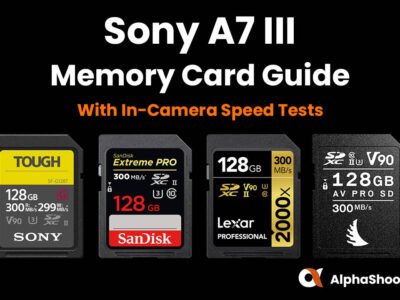
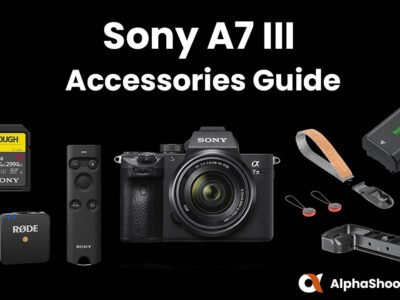
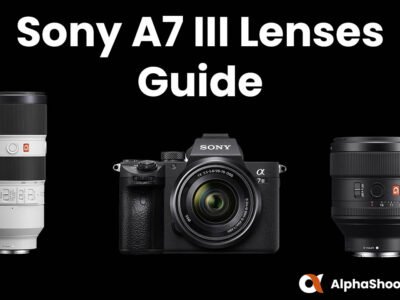
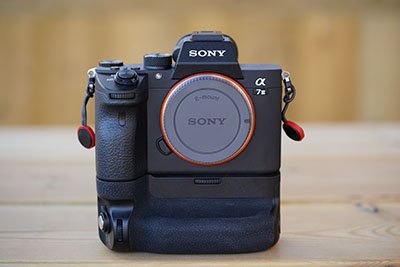
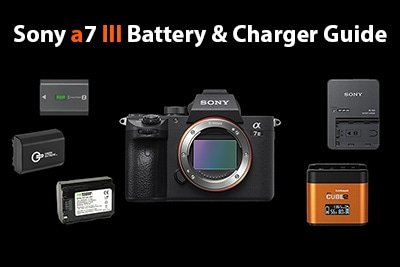
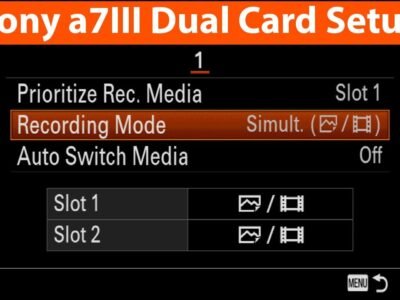


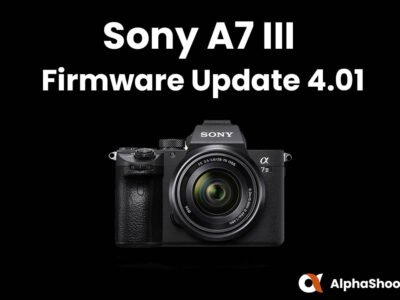
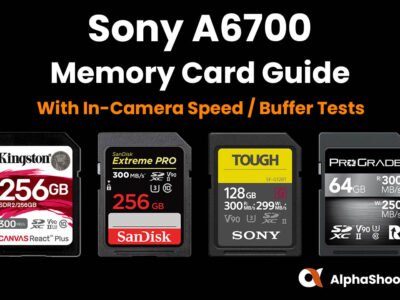

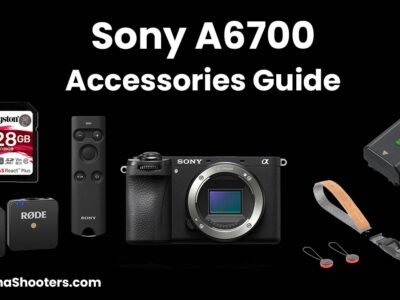
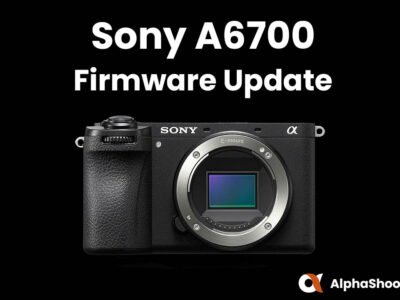
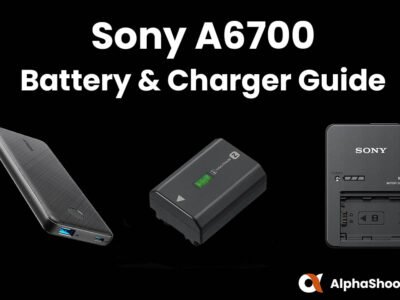



Leave a Reply